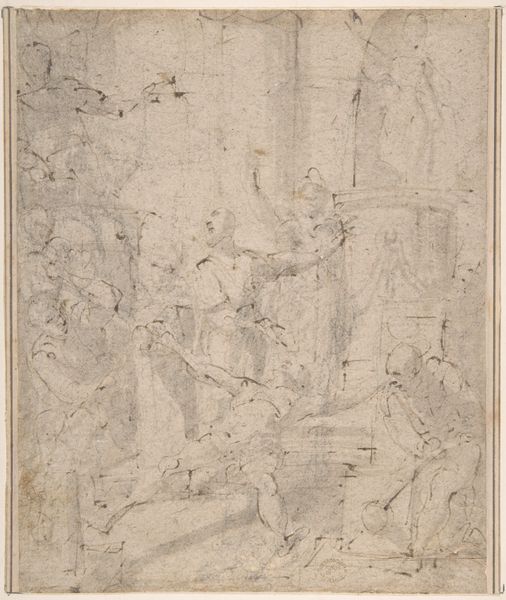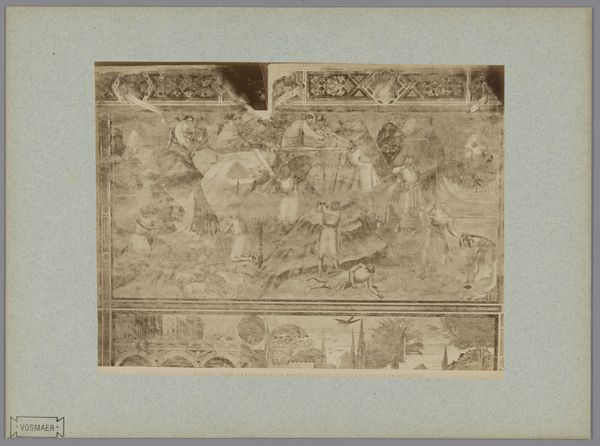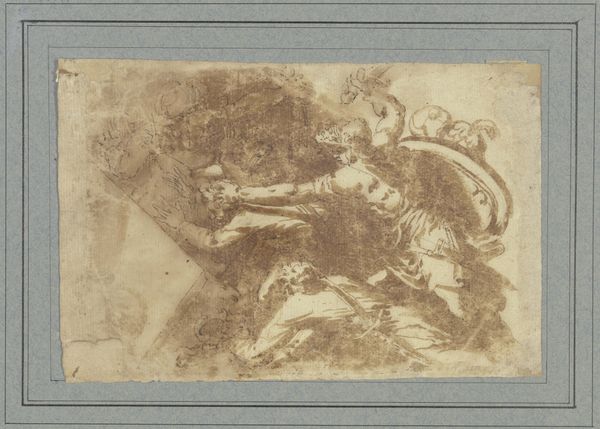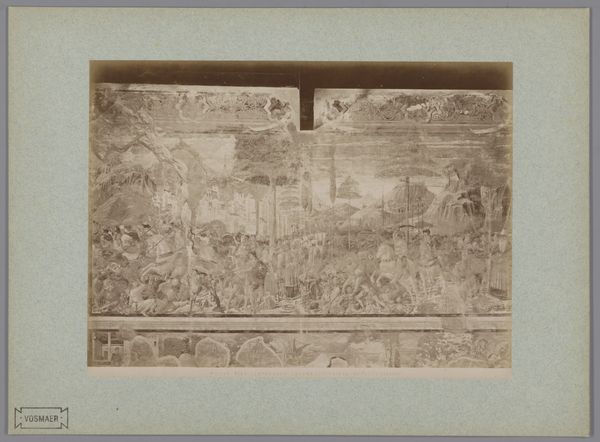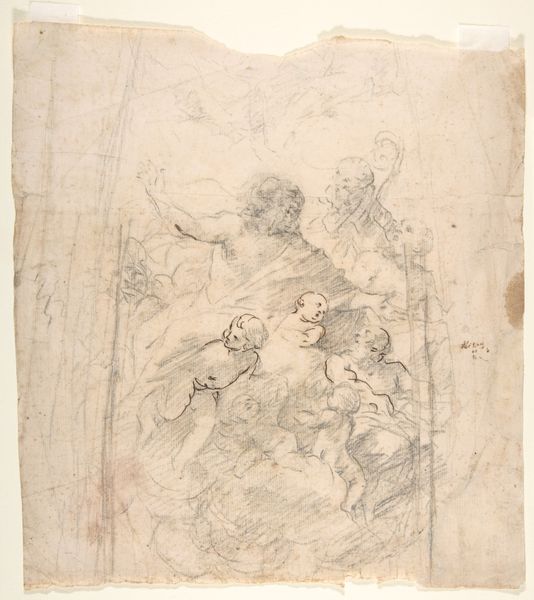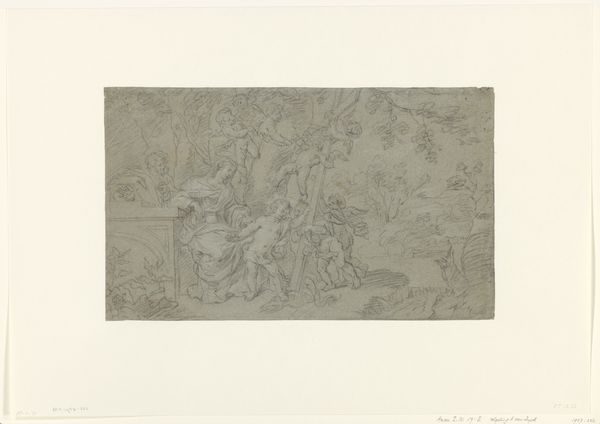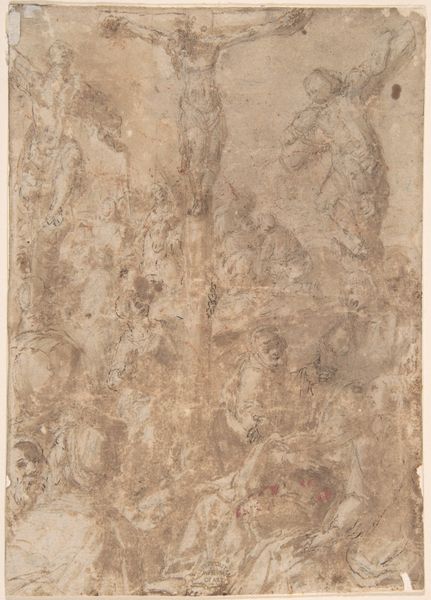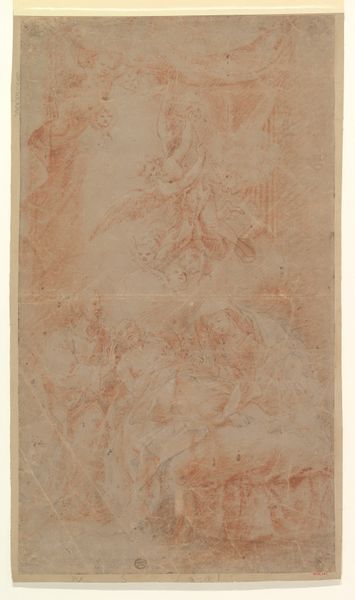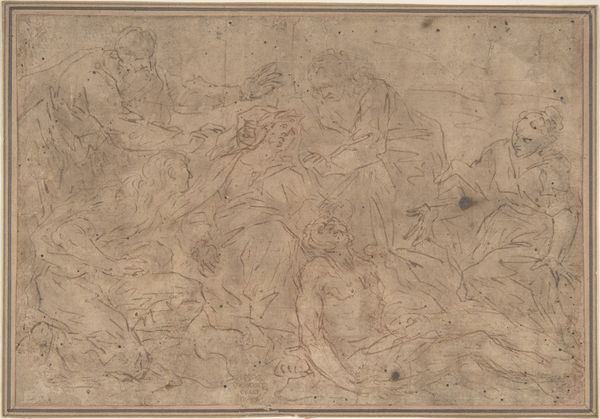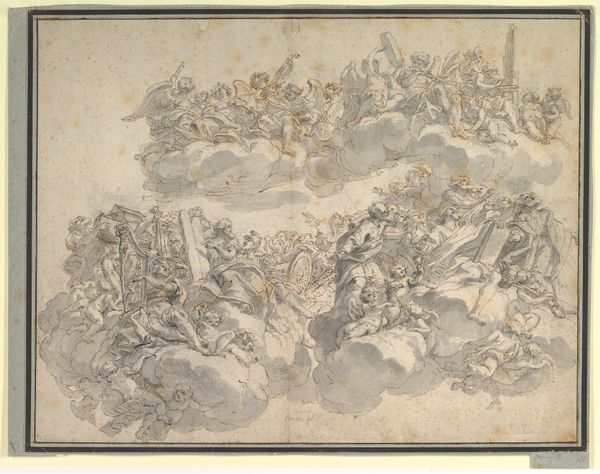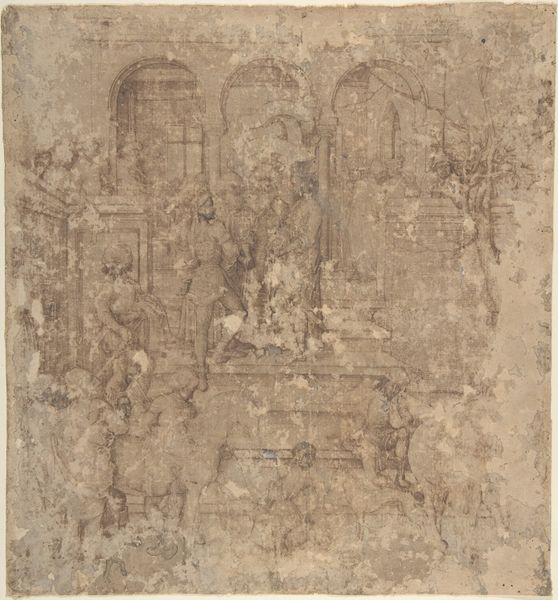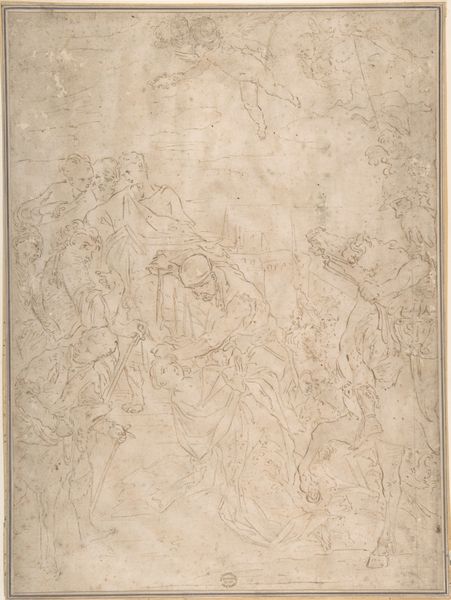
drawing, ink, chalk
#
portrait
#
drawing
#
high-renaissance
#
figuration
#
ink
#
chalk
#
history-painting
Copyright: Public Domain
Curator: This drawing, dating back to around 1515-1516, is entitled "The Victim of Lystra." It's attributed to Raphael and rendered in chalk and ink. It now resides in the Städel Museum. Editor: My initial impression is one of tense energy, but also something left unfinished. The sepia tones give it a fragile feel, like it captures a fleeting moment. What strikes you most? Curator: Immediately, the architectural details in the background pull me in, even in this somewhat incomplete state. They remind me of Roman temples. What is more impressive is how he is using symbolism related to antiquity but rendering what would eventually become Acts 14.8-20. It presents such a striking interpretation of that passage and gives an incredible sense of place to it as well. Editor: Absolutely. Viewing this through the lens of contemporary theory, there's a powerful statement here about idolatry, or perhaps even a more nuanced exploration of belief and misinterpretation. What are we truly worshipping when we elevate individuals, and to what cost, in Raphael's eyes? Curator: The figures are all positioned, with careful use of perspective, to communicate complex emotions with an economy of lines. Notice the tension between the men being honored and Paul's rejection of it? Editor: Exactly, it questions the inherent power dynamics and how these dynamics shift under various belief systems and ideologies. And beyond theology, there is that thread connecting how readily we, as a collective society, create false idols in positions of political authority, reinforcing structures of power and oppression. Curator: A fascinating reading, placing this artwork within our world as much as its own. It reminds us of the visual weight images hold in conveying stories and the ways culture both remembers and interprets them. Editor: I see a continued exploration of the narrative threads connecting historical works and modern socio-political events, inviting dialogue on enduring societal structures. Curator: An excellent reflection that really illustrates how art speaks across the ages, regardless of specific artistic choices. Editor: I agree, thinking about the cultural meaning within art is a continuing act of uncovering different lenses through which to view the past, and more importantly, our future.
Comments
No comments
Be the first to comment and join the conversation on the ultimate creative platform.
